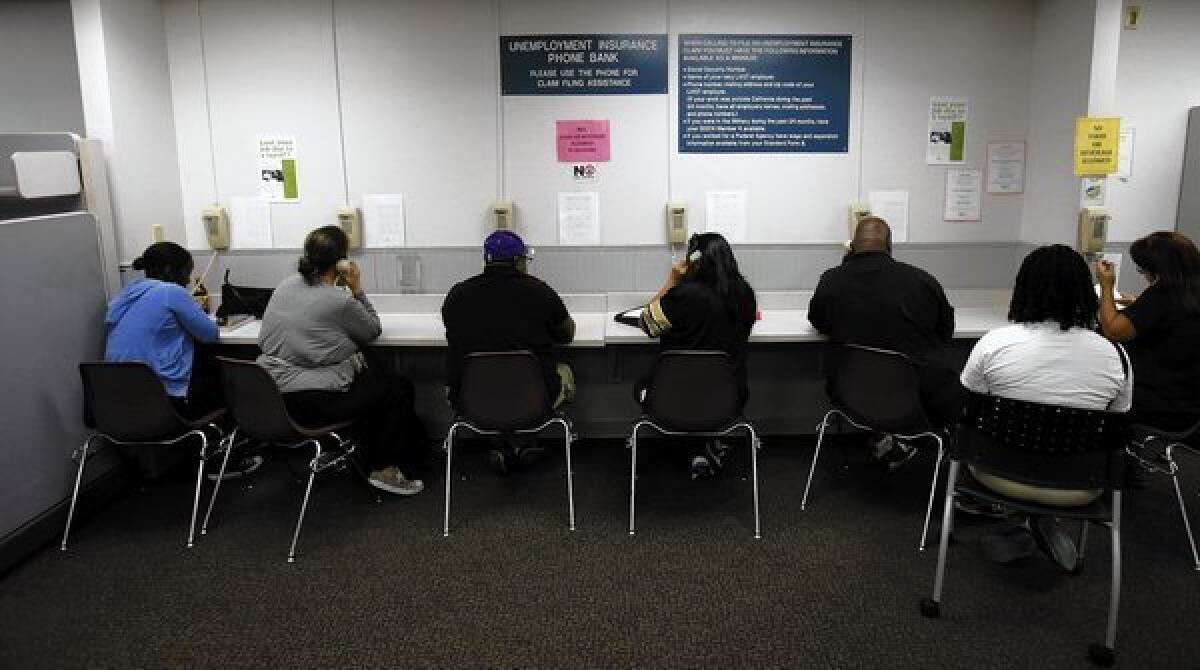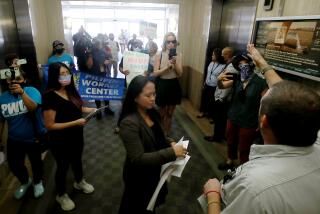A jobless disconnect in Sacramento

- Share via
Imagine you’ve lost your job, which doesn’t take a lot of imagination in a state with 1.3 million people out of work. Now imagine your unemployment checks have stopped and you can’t decipher the explanation from the state Employment Development Department. So you call the phone number on the form and it rings … and rings … and rings….
That’s the reality for countless Californians who have turned to the state’s unemployment office for help, only to find that the phones go unanswered. Not just occasionally but a preponderance of the time. As The Times has reported, as few as 1 in 10 of 3.9 million calls a week were answered by an actual human being in the last three months of 2013.
There are reasons for this. The department gets the bulk of its administrative budget for handling unemployment and some disability benefits from the federal government, and that has dropped from a peak of $645 million in 2010 to $477 million in the most recent fiscal year, covering only 73% of the state’s cost. The Brown administration has scrambled for funds from state sources and has cut costs, including department staff — from 3,800 workers at the peak of the recession to about 2,500 in late November.
One of the empty positions is at the top, vacant since Director Pamela Harris retired in August. Her departure came just before a botched computer upgrade over the Labor Day weekend that delayed payments to about 150,000 people. To catch up, staffers were reassigned from answering phones to processing paperwork by hand. So a fix for one crisis exacerbated a problem elsewhere.
Assemblyman Henry T. Perea (D-Fresno), as chairman of the Insurance Committee, has been pushing the department for resolutions to some of these administrative problems. He has also zeroed in on the agency’s criteria for determining when to deny benefits, about half of which get overturned on appeal, which suggests a fundamental problem with the system. Perea has asked the state’s Joint Legislative Audit Committee to look into the appeals process, which is a good idea. As is his request for an additional $12 million from the general fund to hire 200 more workers.
The department, under Chief Deputy Director Sharon Hilliard, has responded to some of these issues, including looking into the addition of a “virtual hold” phone system in which callers can reserve a time for a return call. That would be a good start. But it also would help, if for no other reason than to shore up public faith, if the governor filled the top job.
More to Read
A cure for the common opinion
Get thought-provoking perspectives with our weekly newsletter.
You may occasionally receive promotional content from the Los Angeles Times.









